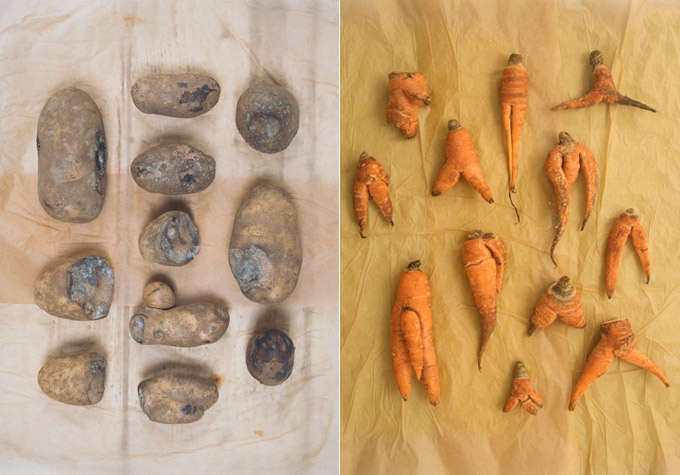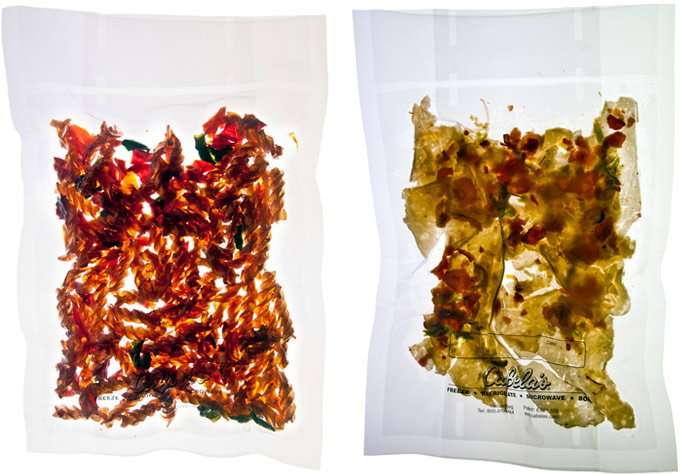
Photo by Tattfoo Tan, 2013.
As climate change brings rising sea levels, increasingly frequent natural disasters, catastrophic floods and unprecedented droughts around the world, it also poses threats to agriculture and food security that we cannot afford to overlook. Freak weather events can destroy a season’s crops, a possibility that is increasingly becoming a reality. Just look at California, where the record-breaking drought is decimating the farms that supply nearly half of all fruits, vegetables and nuts in the United States. Or consider the effects of Hurricane Sandy, which cut off regular access to fresh food on Staten Island, where I live, and in many other communities across New Jersey and New York. Global warming is already transforming our food system, and food shortages are all but guaranteed.
While fighting climate change requires massive solutions, we can all do our part to improve our food security and reduce food waste. According to a February 2014 report from the U.S. Department of Agriculture, 31 percent of the country’s total food supply—133 billion pounds of food—was wasted in 2010. Part of this waste is the result of consumers throwing away food without realizing that it does not have to be pretty to be safe and nutritious. Industrial farming standards and mechanized harvesting and packaging also result in wasted produce. Food is thrown out all along the farm-to-fork supply chain, from inspections at wholesale markets to the stacking of products in grocery stores.

Photos by Tattfoo Tan, 2013.
When I go to Whole Foods, where retail standards ensure that everything is organized and pretty, I too fall into the trap of thinking that all fruits and vegetables should be the same size and color with perfectly waxed skins. I’m paying more money (it’s Whole Foods!), so I want to buy the best-looking bananas, the yellowest ones, the ones without a single brown spot. We are used to the convenience of grocery stores and the cosmetics of produce, but when agriculture and food security are threatened, we will be forced to accept food that doesn’t match our idealized images.

Photo by Tattfoo Tan, 2013.
We can learn about the diverse appearances and tastes of food by shopping at a farmer’s market or growing our own produce at home. When you garden, you learn that vegetables and fruits come in a variety of shapes, sizes and species, and you experience firsthand the hard labor needed to fill your stomach. You see just how crooked a carrot can be. Because each piece of produce in a farmer’s stall is a source of income for her or his family, farmers won’t throw away a potato just because it isn’t the right shade of brown or has a few bruises. Gardening or buying food from local farmers also reduces costs and waste because food isn’t being harvested, crated and then shipped in from faraway places.
Other solutions to food waste could be as simple as supermarkets having a discounted section for produce that is blemished or oddly shaped. Consumers could then buy cheaper, equally nutritious fruit and just peel away the blemishes. Or you can do what I did for my project NEMRE: New Earth Meals Ready to Eat, in which I saved potatoes and carrots rejected by grocery stores. After they were cleaned and chopped, these ugly vegetables became beautiful ingredients for my meals, which I then dehydrated and vacuum-sealed. Food preservation techniques like dehydrating, drying, fermenting and canning are efficient ways to reduce and manage our food waste. Plus, these methods not only preserve food but also enhance its flavor.
The problems of climate change and food waste are new, but the solutions don’t have to be. People have been eating bruised vegetables and using techniques like dehydration and fermentation for centuries. Sometimes in order to move forward, we have to look back and relearn what we have lost. We can use this knowledge and these techniques as bearings to find a more sustainable path instead of wasting our natural resources and destroying the earth.

Tattfoo Tan, Four Colored Bell Pepper Pasta (left) and Mashed Potato with Bacon and Leeks (right), 2013.

Tattfoo Tan, Beets with Onions, Anchovies, Fennel and Balsamic Vinegar (left) and Carrot Soup with Ginger and Sun Dried Tomato (right), 2013.

Tattfoo Tan, Three Beans Chili (left) and Apple Sauce Prosciutto (right), 2013.

Tattfoo Tan, Miso Vegetables Soup (left) and Fried Rice with Beans, Corns and Snow Peas (right), 2013.
Climate Reports is made possible by the Robert Rauschenberg Foundation. This series is produced in conjunction with the 2013 Marfa Dialogues/NY organized by Ballroom Marfa, the Robert Rauschenberg Foundation and the Public Concern Foundation.

